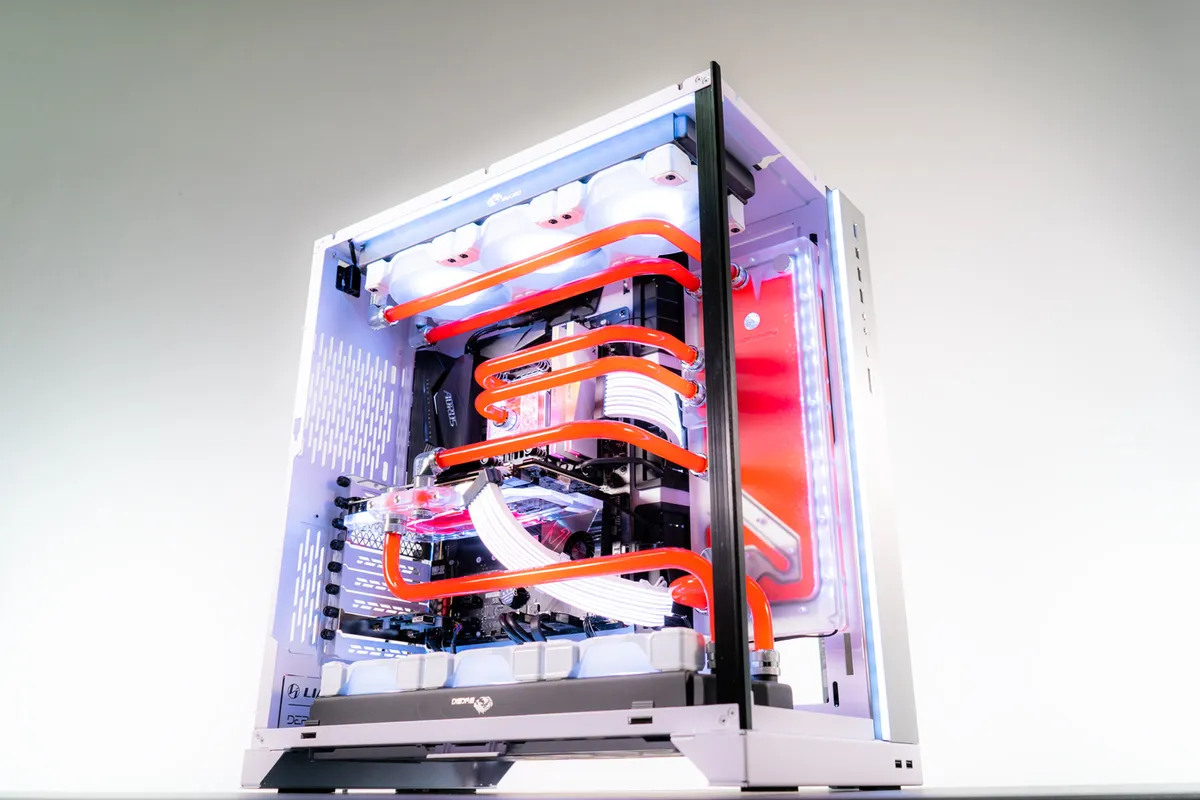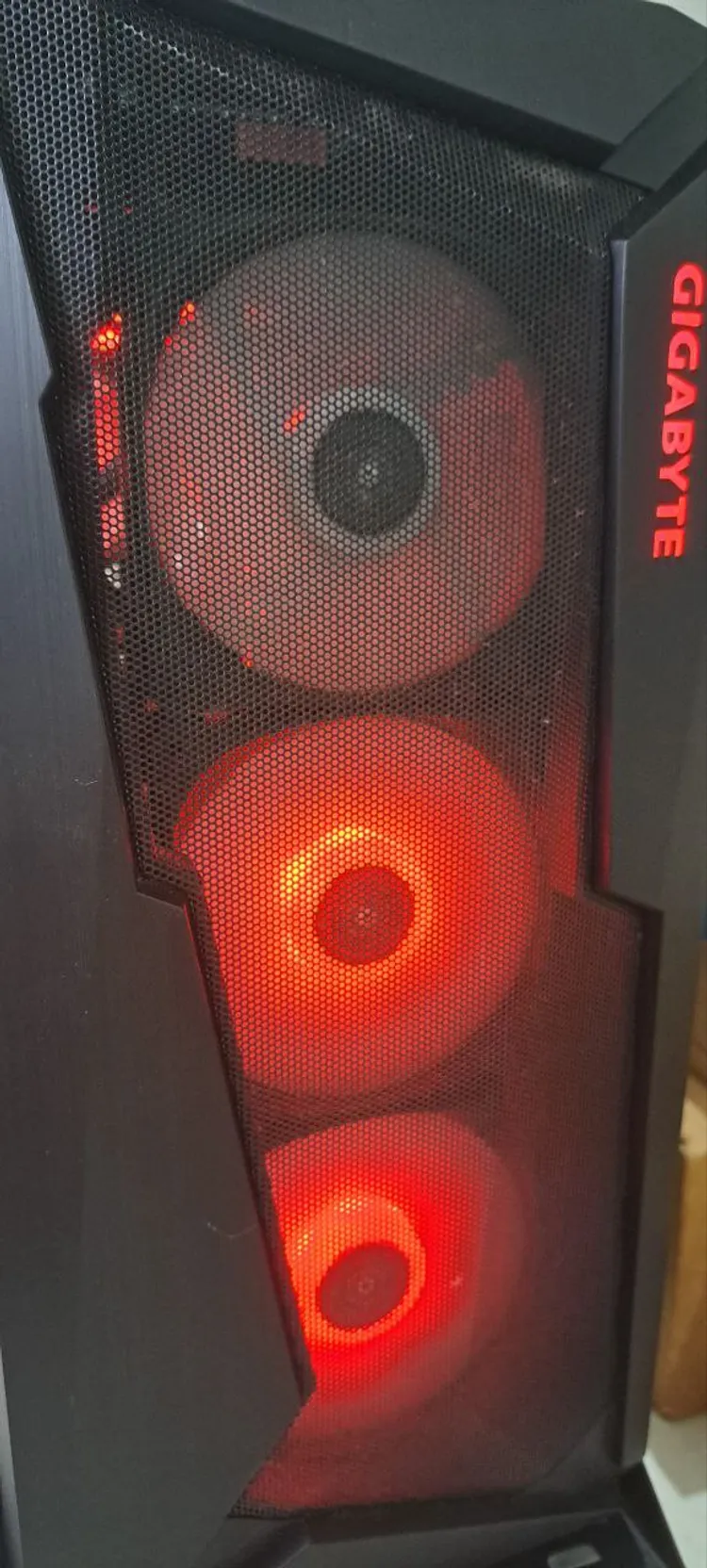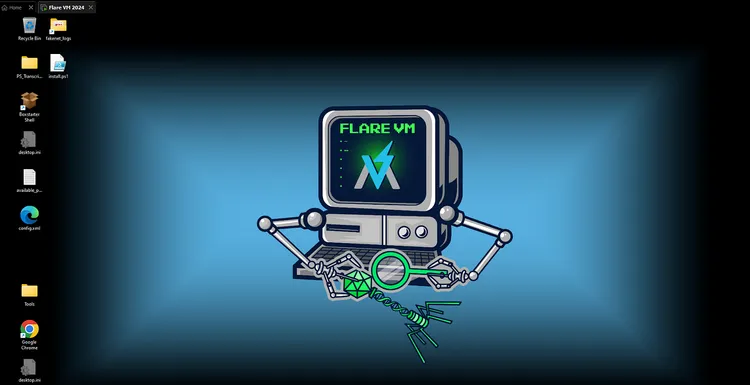A Custom PC Builder's Guidebook: Part 1
PC Building 02-08-2024

While laptops often suffice for the average user, many people often choose to purchase a desktop PC for their more resource-intensive needs. Whether it be gaming, video editing, art creation etc, many tasks require the additional power provided by a PC, making purchasing one a thought most people have considered at least once before. When looking to purchase a PC however, understanding the technical jargon is often a barrier to entry that many users face.
PRE-BUILT OR SELF ASSEMBLE?
As someone who has assisted in building multiple PCs for friends and family, I often hear people considering whether to self-assemble them or buy pre-built PCs from companies such as Aftershock. Having the expertise and experience in building PCs, I often recommend self-building due to the cost savings and customizability to each individual’s needs.
Choosing to self-build a PC allows you to avoid the extra costs tagged on by the middleman, while allowing you to pick the parts most suitable for your specific use case instead of getting oversold and buying much more expensive parts than required.
Quality parts selection is also an area in which self-building wins out against buying prebuilts. I have sometimes seen subpar component choices being included in prebuilts, bearing the big name badges customers are looking out for, but compromising in performance in illogical ways. For example, I have seen a prebuilt company proudly advertise their PC as having a 4070 GPU and an AIO(All-In-One Cooler), but upon closer inspection, the 4070 is only a dual fan configuration and the AIO has only a single fan radiator. If this PC were self-built, the most logical choice would be to simply add a few bucks to get a triple fan 4070 and swap out the AIO for a more efficient air cooler (because an AIO of that size is almost pointless). In my opinion, this sort of advertising is deceptive and shows the cost-cutting nature of prebuilts offered by companies, who prioritise profits over legitimate customer satisfaction.
That said however, there are of course some good arguments in support of buying prebuilt. One benefit is the simplicity of the warranty system. Many large PC building companies offer one stop or onsite support and complete warranty over all the parts in the PC, making repairs and warranty claims a simple matter. This is in stark contrast to the additional work that comes with self-building the PC and needing to register a warranty for each of the components individually. In addition, assembly is completed for the customer, which rules out the possibility of assembly mistakes, which can be costly. PC parts may also be cheaper due to deals between the PC assembly company and the component manufacturers.
Despite these advantages, my personal advice would still be to self-build PCs, because the pros of understanding your device and avoiding bad builds outweigh the advantages offered by large PC building companies. This advice to self-build, however, isn’t for everyone. Those who lack familiarity with PC components might consider consulting a professional for recommendations to avoid making costly mistakes, making hiring a custom PC builder (such as myself) a good choice. In fact, looking at some pre-builts may in fact be a good place to start for those unfamiliar with PC building.
With all that being said however, I do fully believe that learning to build a PC is not a complicated endeavour for the average user. In writing this guide, I hope to provide a simple workflow and basic overview for those interested in PC building. Whether you are looking to make an educated purchase of a prebuilt or build one yourself, this workflow will allow you to choose parts that are most suitable for your situation.
THE BUILDING GUIDE
Part 0: Knowing the Basic Components:
Before diving into the guide, you should know the basic components in a PC and their functions. If you already know this, feel free to skip to the next section! If the components sound unfamiliar however, here’s a quick refresher:
CPU (Central Processing Unit)
The so-called brain of the computer, the CPU handles processing of all the tasks in the computer. Tasks requiring higher computational power include running simulations, AI tools, using databases, etc.
GPU (Graphics Processing Unit)
The GPU translates computer data into displayable information on a monitor screen. Some CPUs have built-in GPUs (known as integrated graphics), but these are often weaker when compared against standalone GPU units found in many PCs. PCs used for 3D art, gaming, video editing and streaming would benefit from having a powerful GPU. For basic productivity however, integrated graphics may suffice.
CPU Cooler
The CPU cooler, as the name implies, keeps the CPU cool. Three main choices exist for CPU coolers. Air Coolers use fans to blow air through a heatsink attached to the surface of the CPU. This type of cooler is often the cheapest and most reliable, with the least moving parts. All in One (AIO) coolers use a coolant liquid to transfer heat from the CPU to a separate radiator, which is cooled by fans. Finally, custom water loop setups perform similarly to AIOs, but include more moving parts and can also be used to cool GPUs. These setups are often extremely pricey, and should be considered only for high-end builds.
RAM
Random Access Memory is the PC’s temporary storage, used to assist in processing tasks in the short term. It can be likened to scrap paper on which you doodle and write notes while working, but throw away at the end of your shift. It can help you keep track of things as you’re working on them, but won’t be permanently stored. Likewise, the RAM in a computer system allows the computer to store data temporarily. Having more RAM and faster RAM enables the CPU to work more efficiently.
Storage
Unlike RAM, storage drives store data more permanently. These are the components that retain all your files for long term memory. Larger storage drives allow you to store more information, while faster drives allow writing and accessing of this information to be processed faster. This can help speed up load times for applications, as well as other file-related tasks such as copying and moving files.
Motherboard
The motherboard is the board which connects all the above mentioned parts together, facilitating data-transfer between these components. The specific motherboard you choose to use likely will depend on the other components you have picked.
PSU
The Power Supply Unit draws power from an outside power source such as a wall socket and distributes this power to each part of the computer as required. A PSU is often chosen based on the amount of power required to power all the components. PSU reliability is critical as it powers the entire system and protects the system from power surges. PSU efficiency is also an important factor, as it determines how much of the power drawn from the socket actually reaches the components.
Case/Chassis
The PC Chassis is the frame that houses all the components within. The size of the chassis can limit the subsequent sizes of the parts within, so it is important to pick a chassis that can fit all the parts you select. The chassis also dictates the airflow within the PC and the size of the CPU cooler, as well as the number of fans you can fit in the PC.
Part 1: Planning the Foundation:
All projects begin with the laying of a solid foundation, and in this case, that would require asking a few key questions.
-Budget:
The first question to consider is the hard budget available for this PC. Usually, a good budget for a PC starts at roughly $1,000+ SGD and goes all the way up. Of course, one could build a PC for less, but I personally feel that it is better to save up and purchase good parts that last, rather than spending a smaller yet still significant sum on subpar parts that may not be sufficient a few years down the road. In addition however, after setting this hard budget, be sure not to stray far from it. It can always be tempting to spend more for better parts, but often, one does not require the latest and greatest technology to be able to run their everyday tasks smoothly. It is also important not to over-allocate budget to any one component, as the PC will always only perform as well as its weakest component will allow. An extremely powerful GPU will still be bottlenecked by a weak CPU, and vice versa. Therefore, resist the temptation to overspend, and stick to your budgets for each component. Below is a rough guide to how much each component should cost:
- Case Chassis: $80-200
- RAM: $100-200
- Cooler: $50-200
- Storage: $100-200
- PSU: $100-200
- Motherboard: $100-150
- The rest of the budget will be split roughly evenly between the GPU and CPU.
These are simply rough guidelines that may be slightly modified in the next section based on your priorities. The exact prices may be different if you are reading this in another country or in the future when prices may have changed, so bear these limitations in mind when deciding your budget.
-Priorities:
The next question to ask is what your priorities are for your PC. What do you want to do on your new PC? Does it have to look fancy or will a plain box be fine? These questions will help you to adjust your budget to focus on components that will help achieve your goals better. This section is broad and may require some research on your own, but here are some general considerations to take note of:
- If you wish to focus on work productivity or other tasks with high computational requirements, focus more budget on the CPU and RAM, and less on the GPU.
- If you wish to use your PC for gaming, allocate slightly more budget for the GPU while ensuring the CPU and RAM is sufficient. Searching for the recommended specifications for your specific game is helpful.
- Video editing and streaming requires high graphical load, ensure your GPU has sufficient VRAM for the task.
- Often, RGB and white coloured versions of parts may cost more than their base versions. Expect to pay a little more if these aesthetics are your goal. Also, this goes without saying, but don’t buy RGB parts for a case that doesn’t have tempered glass! There’s no point paying for lights that you can’t see.
- If aesthetics are important, consider adding a separate budget category for PC decor. Parts such as custom GPU backplates, RGB light strips and custom cabling can elevate your PC aesthetics by leaps and bounds, but the prices add up fast.
Other Considerations:
You should also consider the environment in which you will be using your PC. How much physical space do you have for your PC? Will it be on your desk or on the floor? How many monitors do you have and what are their specs? These considerations must be kept in mind while choosing parts in later steps.
Part 2: Heavy Hitters: Picking the CPU and GPU
The majority of your budget would constitute the CPU and GPU, the two biggest components in determining your PC’s capabilities. Depending on your priorities determined in the previous section, pick either the CPU or GPU first, and match the other component accordingly. I won’t cover too many specifics on these parts as they change often and parts that are good now may be outclassed by the time that you are reading this. I will, however, give some general pointers and examples relevant in the current market. Note that any examples I mention will be referring to the PC version of these parts and not the laptop versions, which are often slightly less capable than their desktop counterparts.
CPU:
The two biggest players in the current CPU market are AMD with their Ryzen lineup, and Intel. To compare CPUs, it is important to understand the naming conventions used by these two companies:
-Intel
Intel names it’s CPUs by categorising them by performance, generation and model. Here’s an example of a CPU that I am currently using myself, the Intel Core i5-12600K.First, for simplicity’s sake, ignore the “i5” prefix and focus on the number 12600. The first two digits of this number, the “12” refers to the generation, and the rest refers to the specific model (600K). This means that the “12600k” refers to a 12th generation version of the 600K model.
This is similar to car naming conventions, where for example a Prius model can have different generations depending when it is released, but it is at heart designed similarly to other Priuses.
So, back to CPUs, what does that “i5” mean? It simply is a category that roughly gauges the performance capability of that model in comparison with other CPUs in the same generation. Intel uses these performance tiers, which increase in capability: i3, i5, i7, i9. These specifically refer to core and thread counts which determine processor capability, but we won’t go too deep into these for the sake of simplicity. Simply put, an i5 would outperform an i3 of the same generation, and an i9 would outperform both, etc. Note however, that this comparison only works within the same generation. Newer chips often perform better than their older counterparts, so a brand new i5 chip may for example outperform a much older i7, simply because the chips have improved as a whole over time. The performance tiers are as such for Intel chips:
- i9: High-End Enthusiast Level
- i7: Upper Level
- i5: Midrange
- i3: Entry Level
Editor's note: Intel has released the Core Ultra lineup and done away with the old naming scheme mentioned above. The basics are about the same, with the "i" in the tier system having been removed, and the generation being the first digit in the three digit long number in the name, starting at 1st gen again.
-Ryzen
Similarly to Intel, Ryzen also names their CPUs by performance, generation and model. Their naming scheme is slightly different however. Here’s an example, the AMD Ryzen 9 7950X
The single digit 9 here denotes the generation, and the first digit “7” in the model “7950” denoting the performance tier within the generation, with the rest being the model number. The performance tiers are effectively the same as the Intel tiers, just without the “i” in front of each tier.
-Which to Choose?
Deciding between the two companies can be a complicated matter that requires research into the current generations of chips offered by both sides. To illustrate this point, allow me to elaborate on the current situation with CPU chips. As of current writing, performance issues have been plaguing the 13th and 14th Gen Intel chips, so Ryzen would be my current recommendation. That said, however, the latest 9th Gen Ryzen chips have shown very little improvement at much higher prices than the previous 7th Gen Ryzen chips, making 7th Gen Ryzen the current most value-for-money choice. As you can see, choosing a CPU isn’t always straightforward, so it’s important to research current news and trends to ensure you make the best choice.
How Much Performance Do I Need?
The performance tier of the CPU you choose should be determined by the tasks you want to use your PC for. The average user would probably find a modern i5 or i7 (or their AMD equivalents) more than sufficient for their needs, unless extremely heavy tasks such as running heavy simulations or AI is a priority.
Sockets
In addition, future upgradability should be taken into consideration. Every few generations, CPU manufacturers change sockets, meaning that installing the newest chips may require you to buy a brand new motherboard that supports that new socket. If you plan to upgrade your CPU in the near future and want to avoid the cost of buying a new motherboard with it, it would be wise to find out how long into the future CPU manufacturers plan to support the current socket of the CPU that you’re purchasing. For example, the current Intel socket, the LGA 1700, is expected to be replaced with the next generation of Intel CPUs, meaning that purchasing an Intel CPU now would likely require you to buy a new motherboard if you plan to upgrade to newer generation Intel CPUs in the future.
GPUs:
Much like CPUs, new GPUs are released frequently and personal research is important when deciding the GPU you plan to purchase. The two main players in the GPU market are Nvidia and AMD. Although Intel has also recently launched their first series of GPUs, they are currently rarer to find in the market and, in terms of price to performance, have not quite reached the same level as the two current market giants. GPU naming schemes share similarity with CPU naming schemes, in that they usually consist of a series of numbers denoting the generation and model.
-Nvidia
Example: Nvidia GeForce RTX 4080 SUPER
In the above example, the key part to take notice of is the “4080”. The first two digits, the “40” denote the generation of GeForce GPUs, and
the last two digits, the “80” are the performance tier. Nvidia GPU performance tiers range from 10 to 90, increasing in increments of 10 for
each model. GPUs at 60 or above are often the mainstream. The “RTX” tells buyers that the card is capable of raytracing, which isn’t
supported on cards with the “GTX” prefix. A “SUPER” or “Ti” suffix refers to a slight performance boost given over the base variant.
-AMD Raedeon
Example: AMD Raedeon RX 7900 XT
Pretty much the same deal for AMD, the first digit of the model number is the generation, while the subsequent digits are the performance
tier. Additional suffixes often are performance boosts as well.
Editor's note: Since 2 weeks ago, AMD has revised their naming scheme to match that of Nvidia, starting with the 9th generation cards. The first cards released with this naming scheme are the 9070 and 9070XT, in direct competition with Nvidia's 5070 and 5070ti respectively.
GPU Cooling and Size Constraints:
Other than balance, another factor you need to consider is the size of your GPU. If you plan to build in a larger case then this is no issue, however, in some cases, larger sized GPUs may not be able to fit. GPUs often come in double, triple or even single fan variants, depending on the manufacturer and models. My personal advice would always be to purchase triple fan variants where possible, as they offer the best cooling and thus more longevity and performance for the same chip. The price difference between double and triple fan variants often are minor, so getting this additional performance for such a small price is a no-brainer.
Balancing the GPU and CPU:
In order to have the best performance for your budget, the GPU and CPU power should be adequately balanced. This is because overall performance is co-dependent on both the CPU and GPU. An underpowered CPU wouldn’t be able to feed the required data to the GPU to run smoothly, while an underpowered GPU may struggle to render and display quickly. Therefore, it is important to have good CPU and GPU combinations. Searching online will help you determine quickly whether or not a specific CPU+GPU combination is suitable, but a rough rule of thumb is that you CPU and GPU should not differ too much in price.
Part 2 will contain the rest of the following chapters:
- Part 3: Keeping Cool: Picking the CPU Cooler
- Part 4: Short Term Memory: Picking the RAM
- Part 5: The Other Type of Memory: Picking the Storage
- Part 6: The Supporting Components: Chassis, Motherboard and PSU
These chapters are currently in development, and Part 2 will be linked here after they’ve been completed!
In the meantime, if you have any questions, corrections, or would like to build you own PC with my guidance, feel free to Contact Me!


